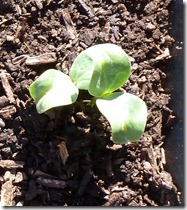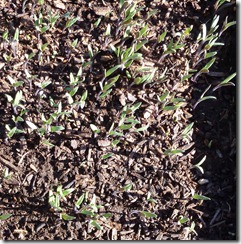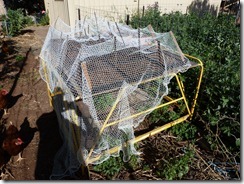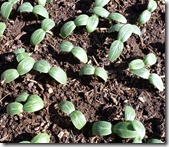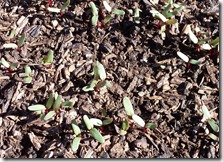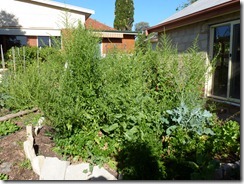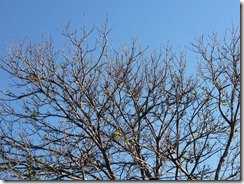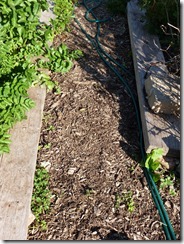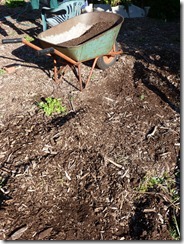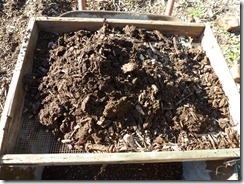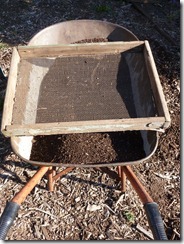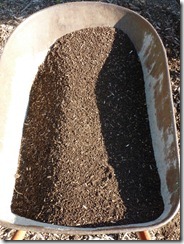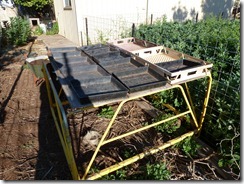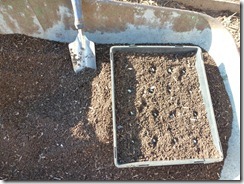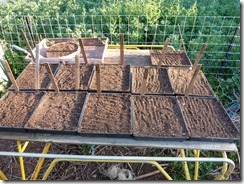The Bridge to Hagsfeld
Mid-2012: The final chapter of the book Tales of a Backyard Farmer
 A sea of faces looked down at me expectantly from the lofty heights of the lecture theatre; scientists and academics from all over the world had gathered in Geisenheim in Germany to hear about the latest research into the irrigation of horticultural crops, and it was my turn to speak. Twenty-three years of solitary effort were about to see the light of day, and if I was going to make this stick, I’d better use what I’d learnt long ago - that what folk really love best is a good story. So I’d be keeping the graphs and charts to a minimum, and calling upon my Irish ancestry to help spin this yarn about a new instrument never seen before…
A sea of faces looked down at me expectantly from the lofty heights of the lecture theatre; scientists and academics from all over the world had gathered in Geisenheim in Germany to hear about the latest research into the irrigation of horticultural crops, and it was my turn to speak. Twenty-three years of solitary effort were about to see the light of day, and if I was going to make this stick, I’d better use what I’d learnt long ago - that what folk really love best is a good story. So I’d be keeping the graphs and charts to a minimum, and calling upon my Irish ancestry to help spin this yarn about a new instrument never seen before…
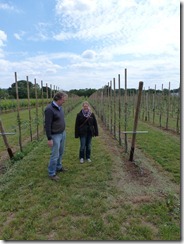 “In about 1985 or 1986” (I began), “a long skinny German student flew down to Australia to undertake his PhD studies into the water relations within citrus crops. And because he knew everything about plant physiology and nothing about electronics, pretty soon he found his way to my lab and we set out to measure the growth rate of oranges up in his test patch in Loxton in the South Australian Riverland. Three years passed quickly, and we shook hands for the last time as he prepared to fly back to the Fatherland with his newly-minted PhD.”
“In about 1985 or 1986” (I began), “a long skinny German student flew down to Australia to undertake his PhD studies into the water relations within citrus crops. And because he knew everything about plant physiology and nothing about electronics, pretty soon he found his way to my lab and we set out to measure the growth rate of oranges up in his test patch in Loxton in the South Australian Riverland. Three years passed quickly, and we shook hands for the last time as he prepared to fly back to the Fatherland with his newly-minted PhD.”
“But wait up there, Peter” (I said), “how are we going to measure the water relations in all those other crops that don’t have oranges hanging off them?”
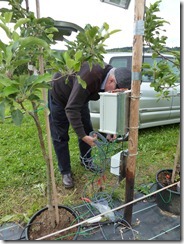 “Andrew” (he said), “I’m going to back to Germany to become the famous Professor of Pomology in Geisenheim and to run the International Symposia on Irrigated Horticultural Crops in 2012. You’re the measurement guy – you figure it out!”
“Andrew” (he said), “I’m going to back to Germany to become the famous Professor of Pomology in Geisenheim and to run the International Symposia on Irrigated Horticultural Crops in 2012. You’re the measurement guy – you figure it out!”
And so began for me a pilgrimage to build an instrument that would change the way the world’s farmers set about irrigating their crops. This ‘crop water stress’ sensor was to be inserted into living plants and (if it worked) would replace all the expensive soil moisture and climate tools that farmers had been using in the past to decide when to irrigate.
I’d be “getting the plants do the talking”.
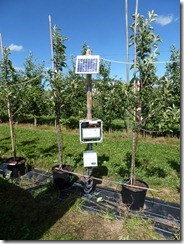 My notebooks recorded the first crude circuits in May 1989 and dozens of notebooks followed, filled with ideas worked out in cafes, trains, planes and at the kitchen table by a man plodding through life under the combined stresses that a part-time doctorate added to the already volatile mix of running an engineering business full-time, community service, home renovations, a large vegetable garden, a growing family, ageing parents and my wife’s own studies and small business start-up.
My notebooks recorded the first crude circuits in May 1989 and dozens of notebooks followed, filled with ideas worked out in cafes, trains, planes and at the kitchen table by a man plodding through life under the combined stresses that a part-time doctorate added to the already volatile mix of running an engineering business full-time, community service, home renovations, a large vegetable garden, a growing family, ageing parents and my wife’s own studies and small business start-up.
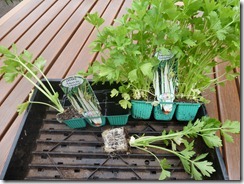 That I succeeded in all this says much for the atavistic urge within me to grow things, dating back - no doubt - to my mother’s Irish ancestors. They had settled in Mintaro in South Australia in 1849 to grow wheat and barley, eschewing the crofter’s diet of potatoes that had failed them during the Irish potato famine, forcing them to flee their homeland. Had I myself been born into a landholding family, farming and irrigating horticultural crops would have been my life’s work. Instead, I was born into a landless city-based family with an inherited gift for engineering. The nearest I could come to farming was in the vegetable garden down the backyard. The nearest I could come to farmers was to be the guy who built their measurement tools.
That I succeeded in all this says much for the atavistic urge within me to grow things, dating back - no doubt - to my mother’s Irish ancestors. They had settled in Mintaro in South Australia in 1849 to grow wheat and barley, eschewing the crofter’s diet of potatoes that had failed them during the Irish potato famine, forcing them to flee their homeland. Had I myself been born into a landholding family, farming and irrigating horticultural crops would have been my life’s work. Instead, I was born into a landless city-based family with an inherited gift for engineering. The nearest I could come to farming was in the vegetable garden down the backyard. The nearest I could come to farmers was to be the guy who built their measurement tools.
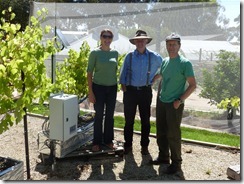 And so here I was in the lecture theatre in Germany in mid-2012, with the conference convenor – my old mate (and now Professor) from those early years in Adelaide – sitting in the front row and wondering what an engineer could possibly tell a distinguished bunch of crop scientists about plants and how to irrigate them. What they didn’t know was that I’d been growing vegetables on and off since I was four years old, in every country I’d landed in except Papua-New Guinea, and that being out in left-field is just where you want to be coming from if you’re going to kick old conventions in the pants.
And so here I was in the lecture theatre in Germany in mid-2012, with the conference convenor – my old mate (and now Professor) from those early years in Adelaide – sitting in the front row and wondering what an engineer could possibly tell a distinguished bunch of crop scientists about plants and how to irrigate them. What they didn’t know was that I’d been growing vegetables on and off since I was four years old, in every country I’d landed in except Papua-New Guinea, and that being out in left-field is just where you want to be coming from if you’re going to kick old conventions in the pants.
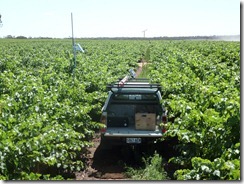 The lecture ended, and I was clapped on the back and invited to Israel, Spain, Belgium, Holland, USA, Italy, New Zealand and back to Germany to take part in scientific trials that would qualify this new sensor for different crops and different agricultural regions. There was excitement in the air – something new had turned up out of the blue, and not just for scientists, but designed for growers on the land. A triumph, really, but I could feel nothing but exhaustion after 23 years of sustained effort and a longing to be by myself - home again in my garden. But it was not to be – the demands of business and family washed over me and, as one does, I was swept along in playing my part.
The lecture ended, and I was clapped on the back and invited to Israel, Spain, Belgium, Holland, USA, Italy, New Zealand and back to Germany to take part in scientific trials that would qualify this new sensor for different crops and different agricultural regions. There was excitement in the air – something new had turned up out of the blue, and not just for scientists, but designed for growers on the land. A triumph, really, but I could feel nothing but exhaustion after 23 years of sustained effort and a longing to be by myself - home again in my garden. But it was not to be – the demands of business and family washed over me and, as one does, I was swept along in playing my part.
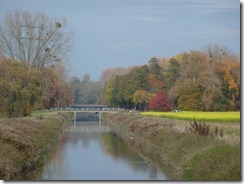 And so, almost two months later, I found myself yet again on the bridge to Hagsfeld. Nowhere really, just a small pedestrian bridge over the main railway line near my German base in Baden-Württemberg; this line runs up from Basel in Switzerland all the way to Hamburg in northern Germany and the Baltic Sea. Cut adrift from my garden in far-off Australia and struggling to find a place to be alone in crowded Europe, this train-watching activity satisfied for me a different atavistic urge; the need to understand ‘how things work’ that I seem to have inherited from my father’s English ancestors.
And so, almost two months later, I found myself yet again on the bridge to Hagsfeld. Nowhere really, just a small pedestrian bridge over the main railway line near my German base in Baden-Württemberg; this line runs up from Basel in Switzerland all the way to Hamburg in northern Germany and the Baltic Sea. Cut adrift from my garden in far-off Australia and struggling to find a place to be alone in crowded Europe, this train-watching activity satisfied for me a different atavistic urge; the need to understand ‘how things work’ that I seem to have inherited from my father’s English ancestors.
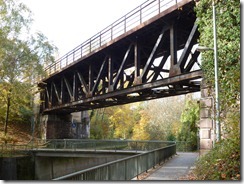 This four-month stint in Germany has had all to do with the cook and her family as she nursed her mother on her death bed; we attended the funeral and then stood by as her father found his feet in his new role as a widower. If I’d thought life in Australia was hard, running an engineering business remotely from half a world away doubled the stress, and I found myself unable to shrug it off or escape it by any activity or diversion. I needed to go home.
This four-month stint in Germany has had all to do with the cook and her family as she nursed her mother on her death bed; we attended the funeral and then stood by as her father found his feet in his new role as a widower. If I’d thought life in Australia was hard, running an engineering business remotely from half a world away doubled the stress, and I found myself unable to shrug it off or escape it by any activity or diversion. I needed to go home.
Finally, duty done, we boarded the Qantas flight for Australia and I found myself wakeful in the early hours of a Saturday morning amidst sleeping passengers in a darkened cabin. The in-flight map in front of me showed us entering South Australian airspace over the vast unpopulated deserts that stretch for thousands of kilometres in all directions up behind Adelaide. Somehow, all the stress lifted off me, and the garden and our Australian life lay ahead.
 Our three grown-up sons had gathered to greet us and to spend the weekend with us, the spring sunshine lit up the garden and its flowering peach and citrus trees, and we could get back to work in earnest. No matter that there was a mountain of stuff to do – this was where we belonged, down the bottom of the world far from our roots in England, Ireland and Germany. We’d been transplanted…
Our three grown-up sons had gathered to greet us and to spend the weekend with us, the spring sunshine lit up the garden and its flowering peach and citrus trees, and we could get back to work in earnest. No matter that there was a mountain of stuff to do – this was where we belonged, down the bottom of the world far from our roots in England, Ireland and Germany. We’d been transplanted…


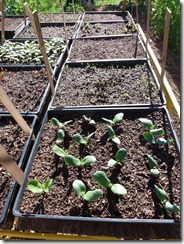
 I’d also been saving on some ‘moon-and-stars’ watermelon seeds for many years, but not planting them out during the decade-long drought that we endured down under here in southern Australia up until two years ago. I’m guessing that it takes about 100 kg of water to grow a kilogram of watermelon flesh, so I’ve been anxiously awaiting a year when I could afford the water to regenerate my ageing seed stock of this old heritage variety.
I’d also been saving on some ‘moon-and-stars’ watermelon seeds for many years, but not planting them out during the decade-long drought that we endured down under here in southern Australia up until two years ago. I’m guessing that it takes about 100 kg of water to grow a kilogram of watermelon flesh, so I’ve been anxiously awaiting a year when I could afford the water to regenerate my ageing seed stock of this old heritage variety.